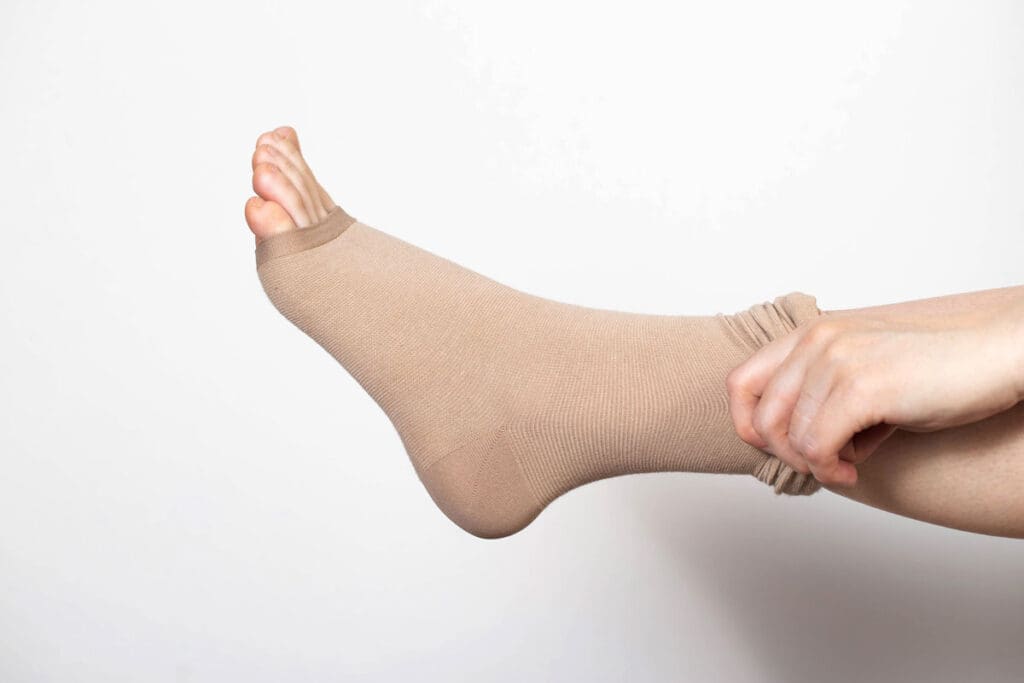Why Chronic Venous Insufficiency Is In The News
On July 17, 2025, the White House announced that President Donald Trump, 79, has chronic venous insufficiency (CVI) after an ultrasound was ordered for mild lower leg swelling. The condition is common and usually managed first with compression stockings, leg elevation, and exercise. If you have leg discomfort, the announcement is a timely reminder that vein problems are widespread and treatable.
What Is Chronic Venous Insufficiency?
Leg veins have one-way valves to push blood back to the heart. When those valves weaken or scar, blood can leak back and pool in the lower legs, causing:
- Even worse ankle or calf swelling
- Achy, heavy, or tired legs
- Brownish skin discoloration or itching near the ankles
- Varicose or spider veins
- Slow-healing sores in advanced cases
If left untreated, CVI can progress to venous ulcers, but early diagnosis keeps complications rare.
How Common Is Chronic Venous Insufficiency?
- About 5% of U.S. adults have been diagnosed with chronic venous insufficiency (CVI) by a doctor.
- When mild and undiagnosed cases are included, up to 40% of adults may have some venous reflux.
Either way, CVI is not rare, especially in people over 50.

Major Risk Factors
- Age 50+ – Vein walls and valves lose elasticity.
- Family history of varicose veins or leg ulcers – Genetics affect valve integrity.
- Pregnancy or female hormones – Added abdominal pressure and hormonal changes weaken valves.
- Long periods of standing or sitting – Idle calf muscles allow blood to pool.
- Excess weight or inactivity – Extra weight and weak muscles slow venous return.
- Previous DVT – Clots can scar valves permanently.
- Smoking – Damages vessel walls and impairs circulation.
Early Symptoms You Shouldn’t Ignore
- Swelling that’s worse in the evening but better after overnight elevation
- New varicose or spider veins are spreading upward
- Skin near the ankles is turning a reddish brown, dry, or itchy
- Nighttime leg cramps or pins and needles
An ultrasound, the same scan used for President Trump, can confirm or rule out CVI.
Modern Vein Treatment Options
Compression Therapy
Properly fitted stockings apply graduated pressure, squeezing blood upwards. Many patients feel relief in days, and newer fabrics make them easier to wear year-round.
Lifestyle Changes
Regular walks, calf raises, ankle circles, and weight management help strengthen the calf muscle “pump” and improve circulation without the need for medication.
Minimally Invasive Vein Closure
Radiofrequency ablation, laser ablation, and medical adhesive close faulty veins from the inside. Blood automatically reroutes to healthy pathways. Procedures take under an hour and only require local anesthesia.
Ambulatory Phlebectomy and Sclerotherapy
For surface varicose or spider veins that remain after main-trunk treatment, tiny incisions or injections remove or seal the vein. These cosmetic touch-ups also reduce aching and itching. All four options are available in-clinic at Vein Institute, with little to no downtime, so you can return to work and exercise quickly.
Quick Self Check: Are You at Risk?
Answer yes to any? You may want to consider scheduling a vein screening.
- Do your lower legs feel heavy or swell by the end of most workdays?
- Has a parent or sibling struggled with leg ulcers or severe varicose veins?
- Do you sit or stand for long periods or have a job that keeps you on your feet?
- Have visible varicose or spider veins appeared in the last year?
Life After Vein Treatment
Most patients are back to normal the next day, wearing compression stockings for 1-2 weeks. Bruising fades in 10 days, and leg heaviness often improves immediately. Follow-up ultrasounds confirm veins are sealed and yearly check-ins catch any new reflux early. Staying active, being healthy, and doing calf exercises will keep your results long-lasting.
Chronic Venous Insufficiency Action Plan: Key Facts & Treatment Options
- Chronic venous insufficiency is common, progressive, and highly treatable, especially if caught early.
- President Trump’s diagnosis is a reminder not to ignore persistent leg swelling or visible vein changes.
- A quick painless ultrasound can determine if your veins need simple lifestyle tweaks, compression therapy or minimally invasive treatment.
If these signs sound familiar, Contact us today at Vein Institute and take the first step towards healthier legs.


